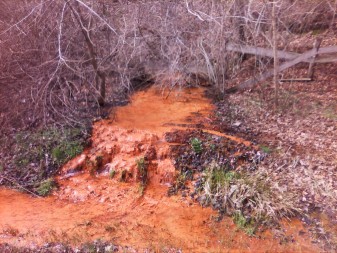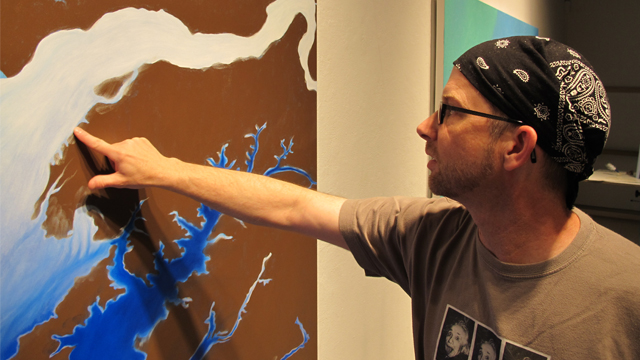John Sabraw grew up making time machines from toasters and old alarm clocks. He built a helicopter from fence pickets and broom handles for liftoff from the military base where he spent his childhood.
Whatever he could lay his hands on Sabraw would turn into craft and sculpture. These days he brings that same principle of salvage and innovation to his work as a professional artist. Inspired by science and the natural world, his goal is to produce artwork using sustainable materials and methods.

That goal is made easier by his collegiate surroundings. Partnering with Ohio University engineer Dr. Guy Riefler, they developed an entirely new type of paint made of the runoff from Ohio’s old coal mines. “This is an area where we have massive coal mines left abandoned,” says Sabraw.
Iron ore and other heavy metals wash out of those old mines. They acidify streams, kill fish, and damage ecosystems. “You look at these streams and they are absolutely orange or a really acidic yellow -- sort of a vomit yellow,” says Sabraw, “and you know it’s dead.”
Riefler and Sabraw found a way to extract those metals from the streams and put them to work as pigments. Iron ore (ferrous oxide) is the basis of commercial red and yellow paints, but according to Sabraw a lot of it comes from China. “They take rusted old metals and put them in giant tanks and use chemicals to get it to do what our streams are doing naturally here,” he says.
